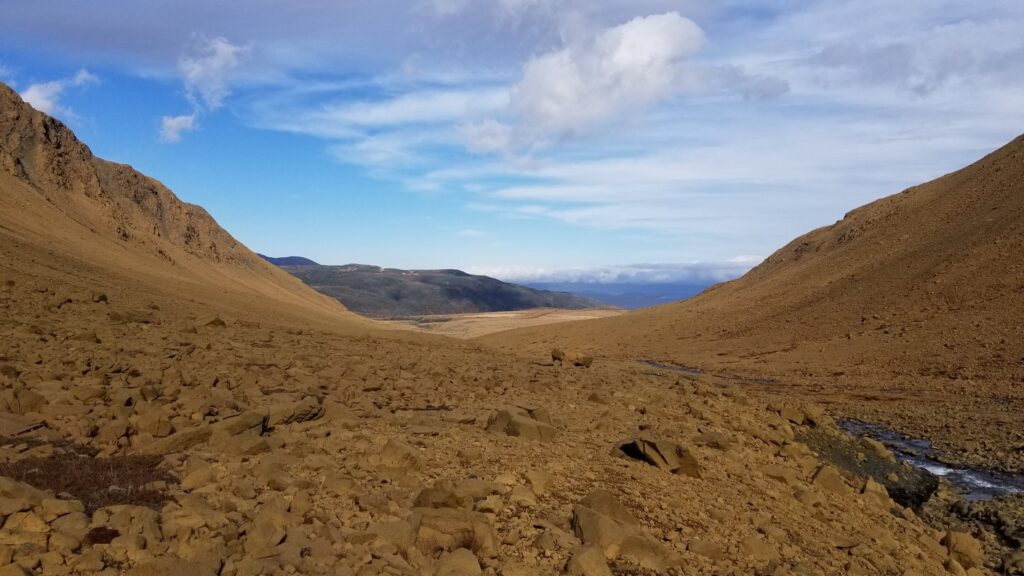Scientists have found rocks on Earth that closely resemble Martian soil. Their research has suggested that in the distant past, the Red Planet was still cold, but there was a lot of ice on its surface.

The climate past of the Red Planet
The question of whether Mars ever supported life has captured the imagination of scientists and the public for decades. Central to this discovery is an understanding of the past climate of Earth’s neighbour: was this world warm and humid, with seas and rivers similar to those on our planet? Or was it cold and icy, and therefore potentially less suitable for supporting life as we know it? A new study finds evidence in favour of the latter, revealing similarities between soils found on Mars and rocks in Canada’s Newfoundland, which has a cold subarctic climate.
The study, published in the Communications Earth and Environment journal, sought to find soils on Earth with materials similar to those of the Martian Gale Crater. Scientists often use rocks to study the history of the environment, as the minerals present in them can tell the story of the evolution of a landscape over time.
Understanding how these materials were formed can help answer long-standing questions about historical conditions on the Red Planet. The soils and rocks of Gale Crater provide insight into the climate of Mars between 3 and 4 billion years ago, when the planet had relatively abundant water — the same time when life first appeared on Earth.
“Gale Crater is the bottom of a palaeo-lake where there was obviously water. But what were the environmental conditions like at that time?” asks Anthony Feldman, a soil scientist and geomorphologist who now works at DRI. “We will never find a direct analogue to the Martian surface because the conditions on Mars and on Earth are very different. But we can look at trends in terrestrial conditions and use them to try to extrapolate to Martian issues.”
X-ray amorphous material on Mars
NASA’s Curiosity rover has been exploring Gale Crater since 2011 and has discovered a variety of soil materials known as “X-ray amorphous material”. These rock components do not have the typical repeating atomic structure that defines minerals and therefore cannot be easily characterised using traditional methods such as X-ray diffraction.
When high-energy rays strike crystalline materials such as diamond, for example, they scatter at characteristic angles determined by the mineral’s internal structure. However, an X-ray amorphous material does not leave these characteristic “fingerprints”. This method was used by the Curiosity rover to demonstrate that such structures accounted for 15 to 73% of the soil and rock samples tested in Gale Crater.
The Curiosity rover also conducted chemical analysis of the soil and rock samples, finding that the amorphous material was rich in iron and silica, but deficient in aluminium. In addition to the limited chemical information, scientists do not yet understand what this amorphous material is and what its presence means for the historical environment of Mars. More information about how such mysterious materials are formed and preserved on Earth could help answer ongoing questions about the Red Planet.
In search of a similar composition on Earth
Feldman and his colleagues visited three sites in search of similar X-ray amorphous material: the plateaus of Grosse Morne National Park in Newfoundland, the Klamath Mountains in Northern California, and western Nevada. These three sites had serpentine soils that the researchers expected to be chemically similar to the X-ray amorphous material from Gale Crater: rich in iron and silicon, but low in aluminium. The three sites also experienced different levels of rainfall, snowfall and temperature, which could help to understand what environmental conditions create the amorphous material and contribute to its preservation.
At each site, the research team studied the soils using X-ray diffraction and transmission electron microscopy, which allowed them to see the soil materials at a more detailed level. In the subarctic conditions of Newfoundland, materials chemically similar to those found in Gale Crater were formed, but also lacking in crystalline structure. Soils formed in warmer climates, such as California and Nevada, did not have this structure.
“This suggests that water is needed to form these materials,” Feldman says, “but cold, near-zero average annual temperatures are needed to preserve amorphous material in soils. Amorphous material is often considered to be relatively unstable, meaning that at the atomic level, the atoms have not yet organised themselves into their final, more crystalline forms.
The research improves our understanding of the climate of Mars. The results show that a large amount of this material in Gale Crater corresponds to subarctic conditions similar to those we would see, for example, in Iceland.
Based on materials from phys.org

